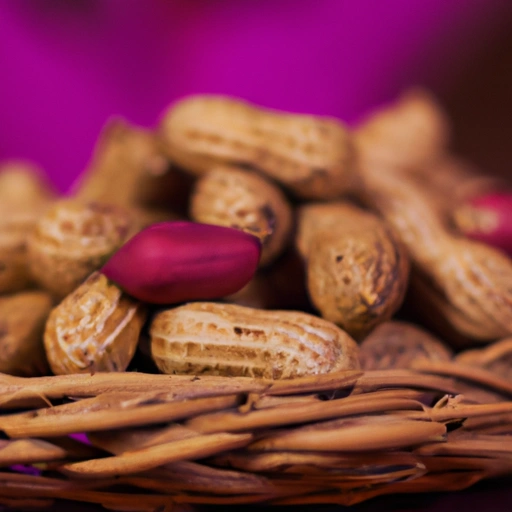Groundnut
Description

Groundnuts, commonly known as peanuts, are a versatile ingredient cherished in cuisines around the world. Not only are they enjoyed as a snack, but they are also incorporated into a myriad of savory and sweet dishes. Groundnuts are the edible seeds of a legume plant and are classified as Arachis hypogaea. They are a rich source of protein, healthy fats, and various essential nutrients, making them a valuable addition to any diet.
Common uses
Groundnuts are commonly used in making peanut butter, as a crunchy addition to salads and stir-fries, and as a key ingredient in sauces and marinades. They are also roasted and salted for snacking, ground into flour for gluten-free baking, and pressed for oil that is used in cooking and salad dressings.
Nutritional value
Calories
One ounce (28 grams or approximately 28 peanuts) of raw groundnuts typically contains around 161 calories.
Protein
Groundnuts contain about 7 grams of protein per ounce, making them a good plant-based protein source.
Fat
With roughly 14 grams of fat per ounce, groundnuts are rich in monounsaturated and polyunsaturated fats, which are considered heart-healthy fats.
Carbohydrates
Groundnuts contain about 4.5 grams of carbohydrates per ounce, which includes dietary fiber beneficial for digestion.
Vitamins
Groundnuts are a good source of B vitamins, particularly niacin, and vitamin E, an antioxidant that helps protect cells from damage.
Minerals
They are rich in minerals such as magnesium, phosphorus, zinc, iron, and potassium.
Health benefits
Groundnuts have been associated with various health benefits, including improved heart health due to their high levels of monounsaturated and polyunsaturated fats. Their dietary fiber content supports digestion, while their protein can aid in muscle building and repair. The presence of antioxidants like vitamin E and minerals such as magnesium contributes to overall wellness and may help prevent chronic diseases.
Potential risks
While groundnuts offer many health benefits, they can also pose potential risks. They are a common allergen, and for individuals with peanut allergies, exposure can be dangerous. Additionally, when consumed in large quantities, the high-calorie content of groundnuts can contribute to weight gain. It is also important to consume them in their most natural state, as heavily processed forms, like some peanut butters, can contain added sugars and unhealthy fats.
Common recipes
Groundnuts are used in various recipes ranging from Asian dishes like pad thai and satay to African stews and sauces like Nigerian groundnut soup. They are also featured in desserts like peanut brittle and peanut butter cookies.
Cooking methods
They can be roasted, boiled, or fried, and are often ground into a paste or powder for culinary use.
Pairing with other ingredients
Groundnuts pair well with flavors such as chocolate, honey, and fruits like bananas and apples. They also complement savory ingredients like soy sauce, chili peppers, and ginger.
Summary
Groundnuts are a delectable and nourishing food ingredient with a broad spectrum of uses in culinary traditions around the world. They contribute to a variety of dishes with their rich flavor and texture. With their impressive nutritional profile, groundnuts can be a beneficial part of a balanced diet but should be consumed in moderation, especially by those with specific health considerations or allergies.